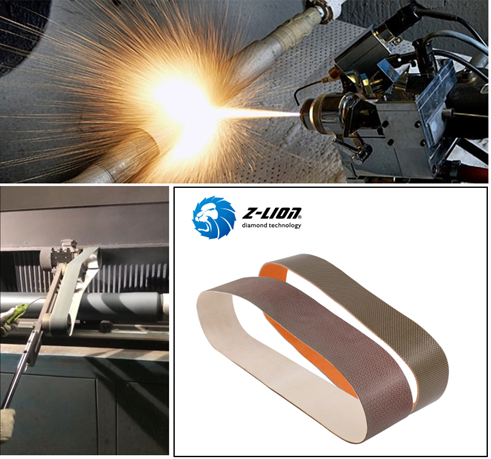Thermal spray is a coating technique that sprays a heated material onto a surface to cover it and make it abrasion, corrosion, erosion, fretting or cavitation resistant. Various materials can be used in thermal spray, but the three most common materials are metals, ceramics and plastics. The material (or feedstock) is heated by electrical (plasma or arc) or chemical means (combustion flame) to be a stream of high velocity finely divided particles in a molten or semi-molten state impinging onto the substrate to produce a coating. The feedstock can be in the form of rod, wire, powder or liquid.
Thermal spray is usually done to protect or repair a surface material. One benefit of thermal spray is that it coats a surface material with a protective barrier. For example, a surface coated with a strong metal will become more resistant to wear, heat, abrasions. Another benefit is that thermal spray can repair surface material. A worn or corroded component can be sprayed with coatings to restore. Although the thermal spray coating does not add any strength to the component, it is a quick and economical way to repair the dimensions of components. Subsequent grinding operations are often needed to smooth the coatings surface and to bring the final dimensions to their appropriate tolerances. Diamond sanding belts are widely used for the grinding operations.

The main benefits and features of thermal spray as a coating process are summarised below:
● It does not require any volatile organic compounds (VOCs) which is harmful to people and the environment.
●Comprehensive of materials can be used as feedstock: metals, alloys, ceramics, cermets, carbides, polymers and plastics.
● Thermal spray coatings are mechanically bonded to the substrate. Can spray coating materials which are metallurgically incompatible with the substrate.
● Can spray coating materials with a higher melting point than the substrate.
● Thermal spray coatings may be applied both manually and mechanised.
● Thick coatings can be applied at high deposition rates.
● Most parts can be sprayed with little or no preheat or postheat treatment, and component distortion is minimal.
● Parts can be rebuilt quickly and at low cost, and usually at a fraction of the price of a replacement.
● By using a premium material for the thermal spray coating, the lifetime of new components can be extended.
There are several different types of thermal spray coating processes. They differ in how they apply thermal and kinetic energy to the source material, the form of the source material and the relative velocities and temperatures of the flame. Each process has advantages and disadvantages, and some are optimized for certain types of coatings.
Thermal spray processes have been widely used for many years throughout all the major engineering industry sectors including the manufacturing of gas turbines, diesel engines, bearings, journals, pumps, compressors and oil field equipment, as well as coating medical implants. Recent equipment and process developments have improved the quality and expanded the potential application range for thermal spray coatings.
Post time: Apr-07-2022
